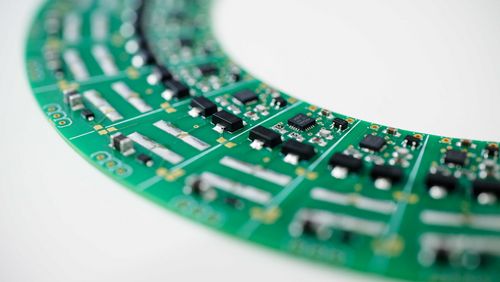
A boost for weak hearts
At the Center for Artificial Muscles in Neuchâtel, researchers are developing a ring that can be fitted around the aorta to help the hearts of patients with cardiac insufficiency pump blood through the body. In 2019, the team made major advances in key areas of the innovative project: the required pumping capacity of the artificial muscle, the material and the energy supply.
Yves Perriard and his team of 10 researchers at the Center for Artificial Muscles in Neuchâtel have set their sights high: they are developing a ring-shaped muscular membrane that can be wrapped around the aorta to support the heart function of patients suffering from cardiac insufficiency. Because the heart is such a powerful muscle, the greatest challenge lies in guaranteeing the necessary pumping capacity. But now, two years on in the project, the researchers have discovered that the heart’s strength works in their favour. Initially, the team presumed that an additional titanium spring would have to be fitted around the membrane to generate enough pressure on the aorta, and they even had their design for the spring patented in 2019. But then, new calculations showed that even the weak hearts of patients with cardiac insufficiency could generate enough force on the ring, making the additional spring unnecessary. That is excellent news for patients—and for heart surgeon Thierry Carrel, who will be testing the aorta ring in clinical trials.
The right stuff
The team also made progress in their search for the right material for the membrane. It soon became apparent that electroactive polymers—which change their shape when stimulated by electricity—are highly suited. The researchers then shifted their focus to determining the optimal chemical composition and degree of thickness for the polymer and developed a fourlayer membrane that is currently being tested in a purpose-built testing unit to assess the elasticity of the polymer and determine how much force it can withstand. As part of the search for the right material, Yves Perriard also initiated a collaboration with the French University of Cergy-Pontoise in 2019 to benefit from the expertise there.
One ring does the trick
One of the key components of the project is ensuring the energy supply to the muscle-like membrane, and in 2019, Perriard’s team designed a blueprint of the electronic componentsrequired. In another part of the project, the researchers developed an innovative testing unit that simulates the flow of blood in the body (image above). The tests and simulations provided another important answer: to generate the necessary pumping capacity, fitting multiple rings around the aorta will not be necessary—a single ring, and thus a single membrane, would suffice. Because using just one ring simplifies the surgical procedure, the advance is also excellent news for patients. An artificial muscle to support heart function—it would be a world’s first. But the researchers in Neuchâtel also see other potential applications for their invention: they hope that the membrane can also be used as an artificial sphincter for people suffering from urinary incontinence or to restore chewing function and facial expressions to accident and burn patients.
Text: Adrian Ritter
Photos: Felix Wey







